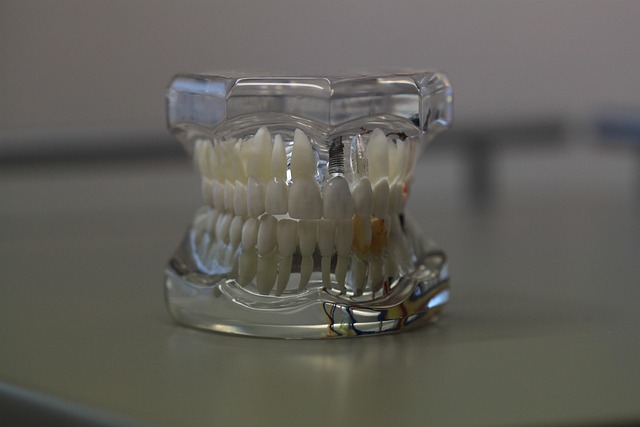Dental malpractice insurance protects professionals from financial and legal consequences of patient harm due to negligence. It covers errors in treatment, diagnosis, equipment malfunctions, and informed consent issues. Policies can be tailored to specialties or general practices, offering comprehensive defense and damages payment for valid claims. This coverage shields providers from lawsuits, legal fees, and settlements, ensuring quality service without ruinous financial risks. Effective insurance includes dental malpractice, general liability, workers' comp, and business income protection, enabling practitioners to focus on patient care. Staying informed about market trends and comparing options helps secure affordable, adequate coverage for new providers.
Dental providers, despite their specialized skills, face unique risks that require tailored protection. This article delves into the crucial aspect of professional coverage through dental malpractice insurance, exploring essential elements like understanding policy limits, navigating claims, and mitigating risks. We discuss why this specialized protection is vital for dentists and how to access affordable options. By the end, you’ll be equipped with insights to ensure comprehensive dental practice security.
- Understanding Dental Malpractice Insurance Coverage
- Why Dental Providers Need Specialized Protection
- Key Components of Effective Dental Insurance
- Navigating Claims and Legal Protections
- Strategies for Risk Mitigation in Dentistry
- Exploring Options for Affordable Dental Malpractice Insurance
Understanding Dental Malpractice Insurance Coverage

Dental malpractice insurance is a crucial safety net for dental providers, protecting them from financial and legal repercussions in case of professional negligence that results in patient harm. This specialized coverage is designed to indemnify dentists, dental hygienists, and other dental professionals against claims of medical malpractice, including errors or omissions in treatment, diagnosis, or patient care. Understanding the scope of this insurance is essential for dental practitioners to ensure adequate protection.
The policy typically covers various scenarios, such as misdiagnosis, improper treatment procedures, equipment malfunctions, or failure to obtain informed consent. It provides financial assistance to defend against lawsuits and pays damages if a claim is valid. Dental malpractice insurance comes in different forms, including general coverage for common dental practices and tailored policies for specialized procedures like orthodontics or dental surgery, ensuring that practitioners are protected in their specific areas of expertise.
Why Dental Providers Need Specialized Protection

Dental providers, like physicians and other healthcare professionals, require specialized protection due to the unique risks associated with their practice. While general liability insurance covers basic risks, dental malpractice insurance is crucial for addressing the specific challenges in this field. Dental procedures involve complex procedures and potential patient harm, which can lead to costly lawsuits if negligence is alleged.
Unlike routine medical errors, dental mistakes can result in visible and immediate damage, such as incorrect fillings or implants. These issues not only cause physical discomfort but also impact patients’ self-esteem and confidence. Dental malpractice insurance protects providers from financial ruin by covering legal fees, settlements, and judgments arising from these complex cases, ensuring they can continue offering quality care without undue worry.
Key Components of Effective Dental Insurance

Effective dental insurance is a multifaceted safety net for professionals in the field, offering protection against potential risks and financial burdens. One of the key components is dental malpractice insurance, which safeguards dentists and dental specialists from claims arising from alleged professional negligence or errors in treatment. This coverage can help manage legal fees and settlement costs if a patient files a lawsuit.
Additionally, comprehensive dental insurance should include provisions for general liability, covering accidents or injuries that may occur within the dental practice premises. Other essential elements might be workers’ compensation for employees and business income protection to mitigate financial losses during periods of unexpected downtime due to malpractice claims or other covered events. These combined protections ensure dental providers can focus on patient care without constant worry about potential financial risks.
Navigating Claims and Legal Protections

Navigating claims and legal protections is a critical aspect of running a successful dental practice. Dental providers must be prepared for potential disputes or malpractice accusations, which can arise from various situations, such as errors in treatment, miscommunication with patients, or failure to diagnose conditions. Having robust dental malpractice insurance is an essential step in safeguarding against these risks. This specialized coverage provides financial protection and peace of mind by helping to cover legal fees, settlement costs, and damages if a claim is brought against the practitioner.
Understanding the scope of dental malpractice insurance policies is key. These policies typically cover incidents involving negligence, personal injury, or property damage occurring within the course of dental care. By staying informed about policy terms and conditions, dental providers can ensure they are adequately protected. Additionally, seeking legal counsel to review contracts and understand one’s rights can further mitigate risks associated with running a dental practice.
Strategies for Risk Mitigation in Dentistry

Dental professionals face unique risks on a daily basis, making robust risk mitigation strategies essential for their practice’s longevity and their personal financial security. One of the cornerstone defenses against potential liabilities is obtaining adequate dental malpractice insurance coverage. This insurance acts as a shield, protecting dentists and their practices from significant financial losses in the event of medical errors or negligence claims. By assessing their specific needs and understanding the scope of potential risks, dental providers can tailor their insurance policies to offer comprehensive protection.
Additionally, staying up-to-date with continuing education courses focused on risk management and patient safety is vital. These educational initiatives equip dentists with the knowledge and skills to minimize errors, improve treatment outcomes, and foster a culture of high standards within their practices. Implementing evidence-based protocols, utilizing modern technology for accurate record-keeping, and maintaining open lines of communication with patients are further proactive measures that contribute to effective risk mitigation in dentistry.
Exploring Options for Affordable Dental Malpractice Insurance

Many dental providers, especially those just starting their careers, often find themselves navigating a complex landscape when it comes to dental malpractice insurance. The cost of coverage can be a significant concern, as it directly impacts the financial stability and accessibility of quality care. However, exploring various options and understanding market trends can make it easier to secure affordable dental malpractice insurance without compromising on protection.
One strategy involves comparing different insurance providers and their policies side by side. Market competition drives innovation and often results in more accessible and economical options. Additionally, discussing with peers and mentors who have successfully navigated this process can offer valuable insights into finding the right balance between coverage and cost. Staying informed about industry changes and taking advantage of available resources will empower dental professionals to make informed decisions regarding their dental malpractice insurance needs.
